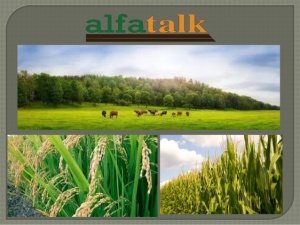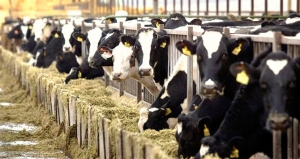 Hydroponics farming for animals or Alfaculture is popular all over the world with farmers, ranchers, horsemen and zoos. It is a compact, simple, and cheap way to produce high quality green forage for farm animals. Any kind of grass or cereal grains can be sprouted in a well maintained Hydroponic growing system or in Alfaculture. Addition of any nutrient solution which is the growing media, increases the food value of the final product.
Hydroponics farming for animals or Alfaculture is popular all over the world with farmers, ranchers, horsemen and zoos. It is a compact, simple, and cheap way to produce high quality green forage for farm animals. Any kind of grass or cereal grains can be sprouted in a well maintained Hydroponic growing system or in Alfaculture. Addition of any nutrient solution which is the growing media, increases the food value of the final product.
Alfaculture generally takes about five to eight days to grow from seed to an 8 inch mat of grass, packed with vitamins and minerals. Types of plants typically grown for livestock forage include alfalfa, barley, oats, clover, grass and wheat.
Alfaculture or growing livestock forage in a hydroponic system might seem like an expensive way to feed dairy or beef cattle or other livestock, but in most situations it could prove very helpful. Livestock forage may include any agricultural foodstuff used specifically to feed domesticated livestock, such as chickens, horses, pigs, cattle and goats. The term refers to food given to animals, rather than the food they feed for themselves.
 There are so many companies nowadays that are offering the forage systems, as well as other systems for hydroponic growing. Alfaculture could provide producers with an excellent source of forage and cattle are able to eat the whole thing, sprout mat and all. With Alfaculture, plants can be grown in a small amount of water on a mat with added nutrients – but without soil. Alfaculture apply hydroponic or the soilless farming technology for the production of fresh feed which can be grown anywhere under any climate situation. A thousand pounds of barley, wheat or corn grows into 7,000-8,000 pounds of feed in only 10 days.
There are so many companies nowadays that are offering the forage systems, as well as other systems for hydroponic growing. Alfaculture could provide producers with an excellent source of forage and cattle are able to eat the whole thing, sprout mat and all. With Alfaculture, plants can be grown in a small amount of water on a mat with added nutrients – but without soil. Alfaculture apply hydroponic or the soilless farming technology for the production of fresh feed which can be grown anywhere under any climate situation. A thousand pounds of barley, wheat or corn grows into 7,000-8,000 pounds of feed in only 10 days.
Alfaculture systems generate a much better yield over a shorter period of time in a smaller area than traditionally-grown crops. Alfaculture is a year-round growing system that produces a consistent quantity and quality of plant material, regardless of outside weather. Hydroponics Livestock forage is becoming more important to farmers worldwide due to the lack of arable farm land. For example, Alfaculture has been used by dairy producers with limited arable land. Livestock farmers can grow their forage in a soilless farming f facility, rather than having to find more land. Alfaculture allow farmers to grow any kind of fresh grass forage for their ruminants or poultries, irrespective of land or weather conditions which are the biggest obstacles for traditional green fodder production.

 Livestock farmers around the world have to focus on more intensive farming with harsher conditions and a lack of land. It is not easy to grow good quality hay in drought conditions, and often pasture or crop land is not available or is very expensive.
Livestock farmers around the world have to focus on more intensive farming with harsher conditions and a lack of land. It is not easy to grow good quality hay in drought conditions, and often pasture or crop land is not available or is very expensive.